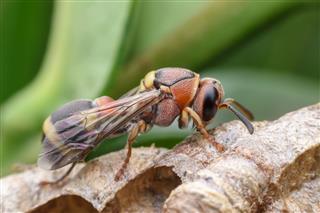
A maggot in itself is not an organism, but a phase in the life cycle of a housefly, which begins when the egg hatches and culminates with the onset of pupal stage. The larval stage or maggot stage comprises three sub-stages, wherein the larvae feeds voraciously, until it enters the pupal stage.
Maggot is the commonly used term of the larval phase of development in insects belonging to the Diptera fly order. Several fishing enthusiasts use maggots to catch non-predatory fish. Besides that, maggots are also found useful in therapies, wherein they are introduced to the wounded portion of the body. They eat their way into the necrotic tissue and promote wound healing by consuming the bacteria in it. Thus, these creepy-looking maggots turn out to be beneficial to humans.
Maggot Phase
Common house flies are lured by garbage, leftover food, animal dung, manure, and moist rotting material. They lay their eggs in such rotting materials, in clusters of hundreds. The eggs hatch in warm weather within the next 8 – 20 hours. The minute they hatch, they begin feeding on the material on which they were laid. What’s interesting, is the fact that these species go through an interesting life cycle―the maggot phase being one of the stages involved.
First-instar Larvae
The hatched larvae appear creamy white in color with a length of 2 – 3 mm. These first-instar larvae are voracious feeders and feed on the surrounding food material.
Second-instar Larvae
Once the larvae attain the 10 mm size, they enter the second larval stage. The larvae continue feeding at this stage and molt or shed their skin for the first time.
Third-instar Larvae
As the larvae continue feeding, they grow to attain a height between 15 – 20 mm. Their color ranges from creamy to a light brown or reddish. They molt once again at this stage.
These three instar stages constitute the main feeding stage of the fly. Maggots are voracious feeders and can feed continuously for 24 hours non-stop. It is their feeding capacity that forms the basis of maggot therapy. After the feeding stage, the mature larva is ready to pupate and moves to drier regions. It forms a reddish-brown casing around itself and then pupates.
Facts About Maggots
Where Do Maggots Live?
Since, maggots are voracious feeders, they will only live in areas where there is abundance of food. The flies know this, which is why they lay their eggs on carcasses, rotting waste, etc. Also, there exist plant maggots, which feed on fruits and leaves.
Can Maggots Live in Water?
Water doesn’t seem to hinder maggots from growing. You can test this by placing a chunk of stale meat in a plastic cup filled with water. Leave the cup out for flies. Soon flies will lay their eggs in the water and maggots will thrive on the stale piece of meat.
How Long Do Maggots Live?
Since maggots are intermediary stages in the life cycle of flies, their lifespan is only around 8 – 10 days, after which they molt into the pupal stage and turn into flies. The second molt occurring in the third-instar larval stage leads the maggot to the pre-pupa stage, after which there’s the pupa stage, and finally the adult fly stage. The entire maggot phase takes 10 days in warm environment and up to a month in cold weather. Simply put, maggots’ lifespan is only 8 – 10 days before it enters
Though maggots are used in the treatment of non-healing wounds, maggot infestation in itself can be dangerous at times. Maggots of some species feed on live as well as decaying matter and thus, can be quite deleterious. An apt example of this will be the maggots of screw worm fly, which are known to be flesh-eaters. The screw worm fly lays eggs on the edges of wounds or mucus membranes of body openings. When these eggs hatch, the maggots eat their way into the body, causing severe tissue damage and may even result in death of the person.




